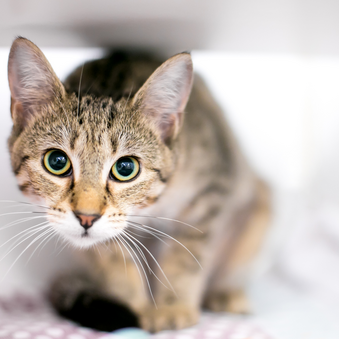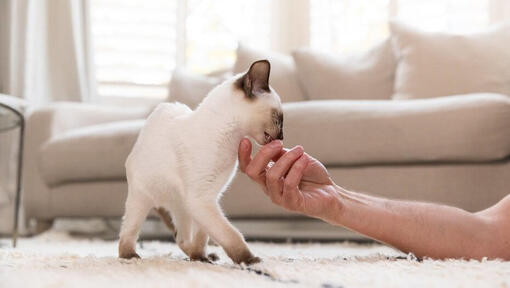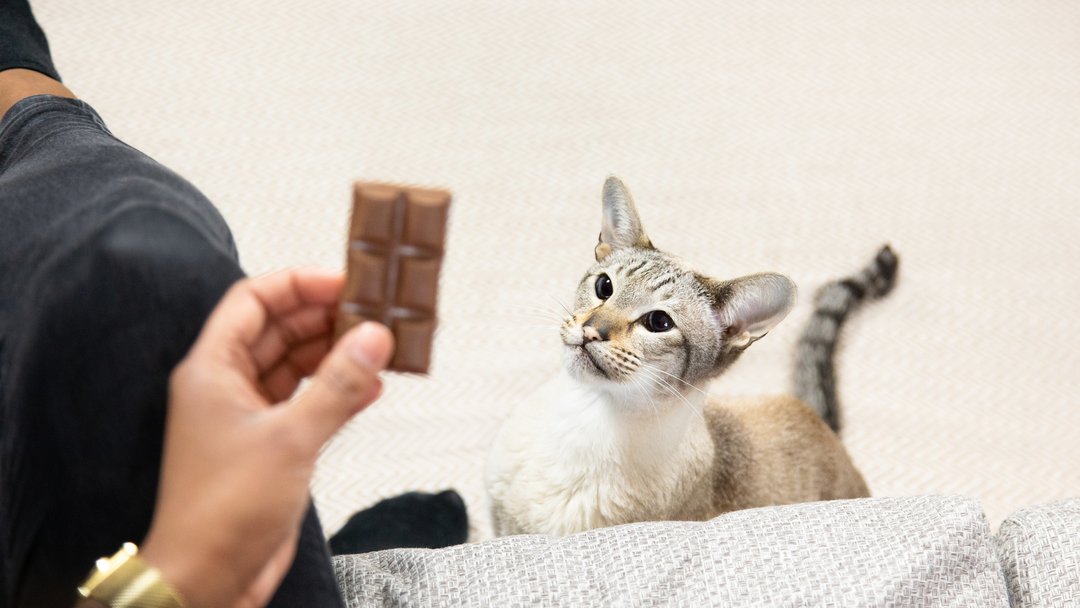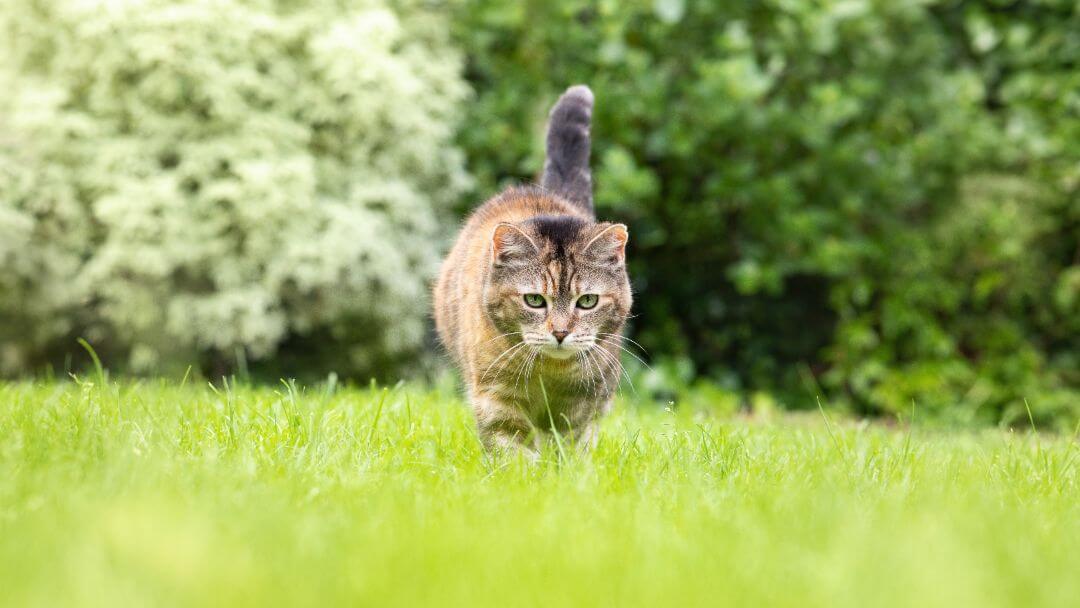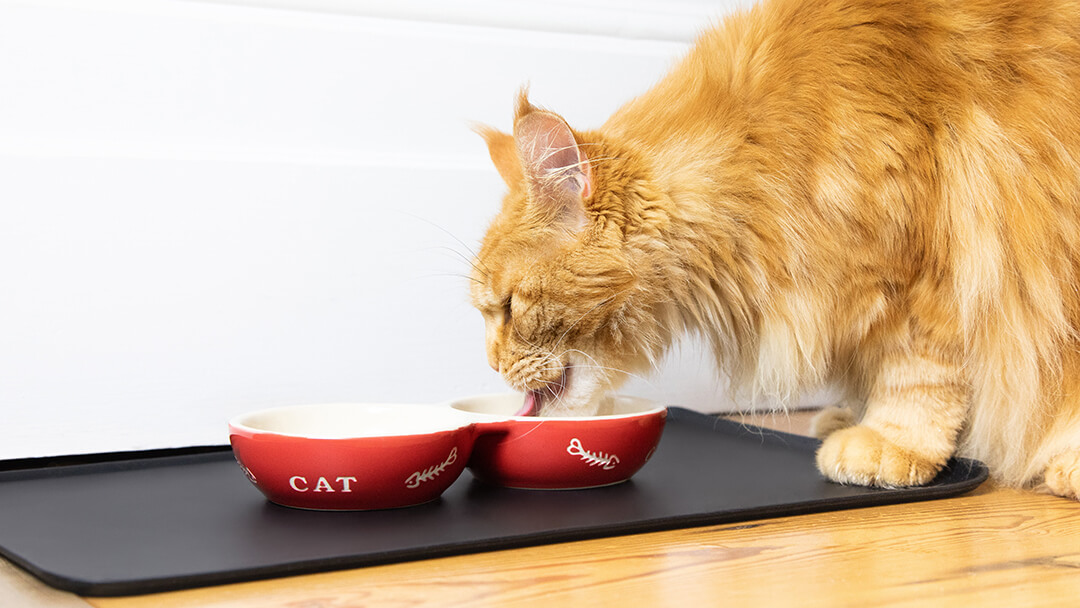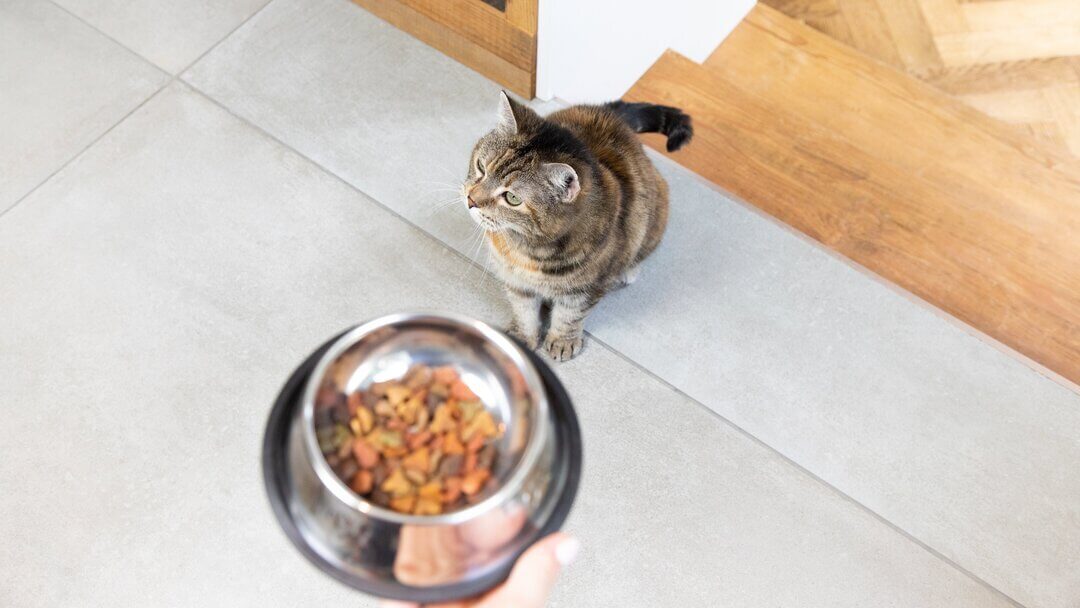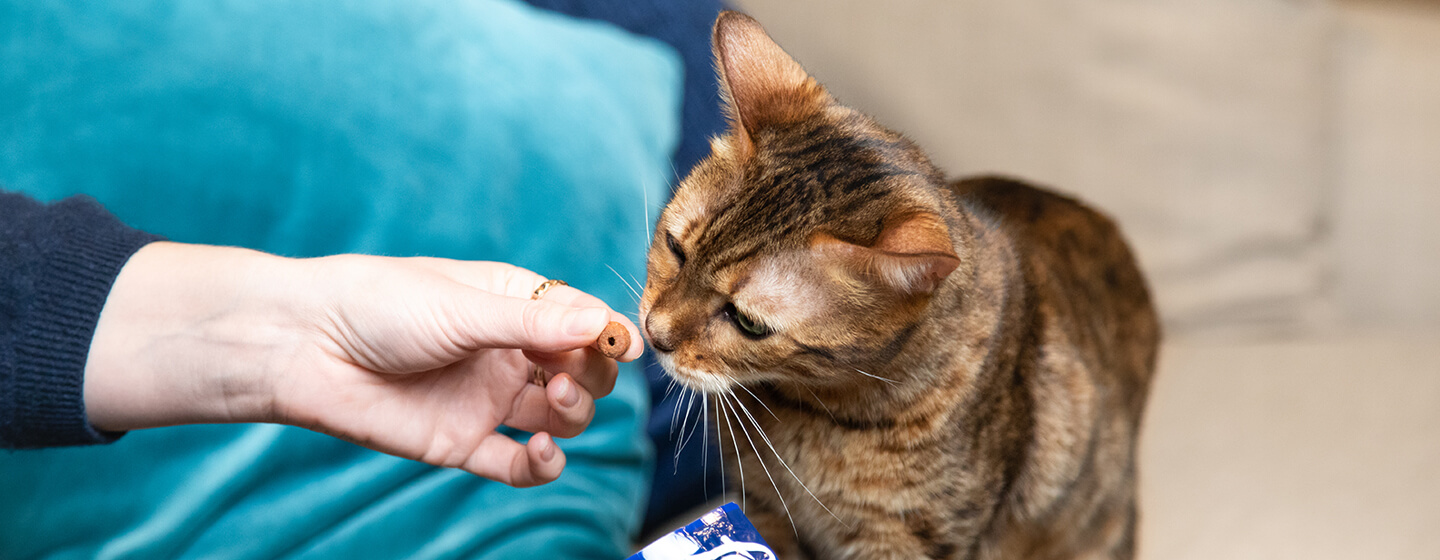
As a cat-lover, you’ll know how tempting it can be to give your furry friend treats and titbits to eat alongside their main meals.
Scraps from the table or food fed by hand are, for lots of people, a way of showing affection to your cat. As lovely as it is getting your dear feline’s attention and having them eating out of your hand, literally, cat treats are best used sporadically and within certain limits. Here is how to get treat time right, how many treats a day to feed your pet and what to avoid.
Which cat treats to choose?
When it comes to treats for cats, your intentions may be good, but the fact is that human foods can be very high in calories and salt, and often lack many of the essential nutrients your cat needs. What this means is that you run the risk of overfeeding and/or upsetting the balance of your cat’s diet.
The good news is that many manufactured cat treats are also available - these may be designed to support digestive or dental health, or as an extra special treat or reward for your feline friend.
How many cat treats a day?
Cat treats contain calories and are usually not complete and balanced. They’re meant to given just as an occasional treat. It’s therefore important that whenever you give cat snacks to your pet, you reduce their main meal by an equivalent calorific amount. You should also limit feline treats to no more than 10% of their total daily calorie intake, so that you don’t unbalance your cat’s overall diet.
Is milk considered a cat treat?
Ever heard of the ‘cat that got the cream’? Tradition has it that cats love milk - but really, their digestive systems are not designed to cope with the lactose in milk (a type of natural sugar found in milk products). In fact, many cats will develop diarrhoea if fed cow’s milk
Special cat milk is low in lactose to avoid these digestive upsets but, as with all cat treats, this milk contains calories and this should be taken into account to keep their diet balanced. Special cat milk should not be used as a substitute for water either – if you do give your cat specially-formulated cat milk, you should reduce their overall calorie intake accordingly.
"Treats or cat biscuits can be useful to give to your furry friend as rewards, and we all enjoy giving our pet a tasty treat to show how much we love them!"
Introduce cat treats as part of their training and exercise routine
Treats or cat biscuits can be useful to give to your furry friend as rewards, and we all enjoy giving our pet a tasty treat to show how much we love them! But the best cat treats are part of games that keep your feline well-exercised and well-entertained. We’re thinking Pinatas full of their favourite treats or a good hide and seek food game to combine eating with exercise.
Toxic foods that can be easily confused for cat treats
- Coffee
- Chocolate
- Grapes & Raisins
- Raw dough
- Onions and garlic
It is important to keep your cat away from the kitchen while you’re cooking and to make sure food that can cause trouble is not within easy reach. If you suspect your cat has ingested one of the foods above, contact your vet immediately.
How to stop your cat from begging for food
Begging for cat treats is a bad habit that many cat owners unfortunately encourage without even realising it. It’s important to avoid feeding your cat scraps from the dinner table and to put any leftovers away so the nosy feline doesn’t think that’s their reserved food. Don’t use your plate as a cat food dish either. Their food bowl should be the one place where they can find their meal.
Difficult as it may seem at first, it’s best to ignore the begging that takes place during dinner time. This way your cat will learn that their efforts are in vain and refrain from trying over and over again to get your attention for a tasty treat.
Other useful tips:
- For very young cats, kitten treats may be available but are not recommended – they can add unnecessary calories to your kitten’s feeding schedule.
- Make sure with both main meals and treats that your cat has access to clean, fresh drinking water throughout the day.
- Just remember to reduce your cat’s main meal accordingly if you do give cat treats, and choose cat treats that are nutritionally balanced to avoid upsetting their diet.
- Think about using some of the kibble from your cat’s main meal as a reward, especially if they are on a special diet for medical reasons or for weight loss, as treats may not be allowed. Check with your vet if you are unsure.
You can read more about what to feed your kitten here. And if you’re eager to find out more about kitten and cat training (with or without cat treats) check our in-depth article.

